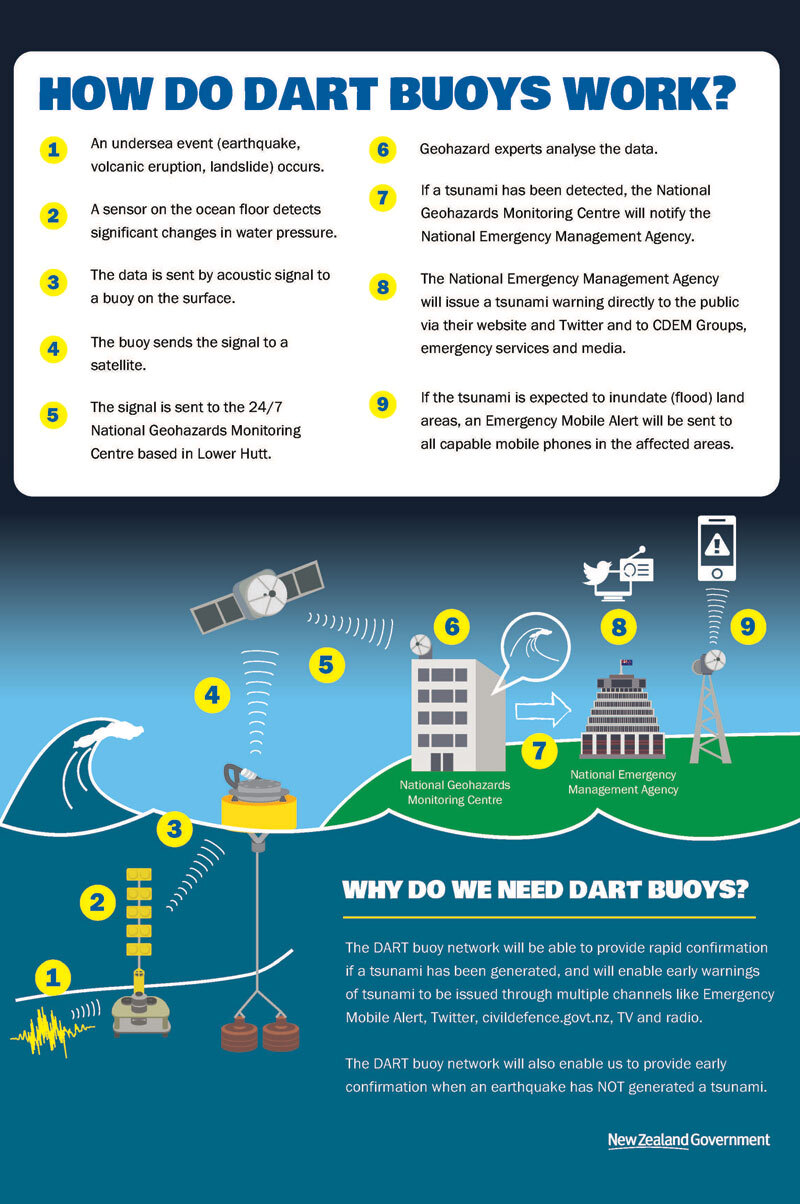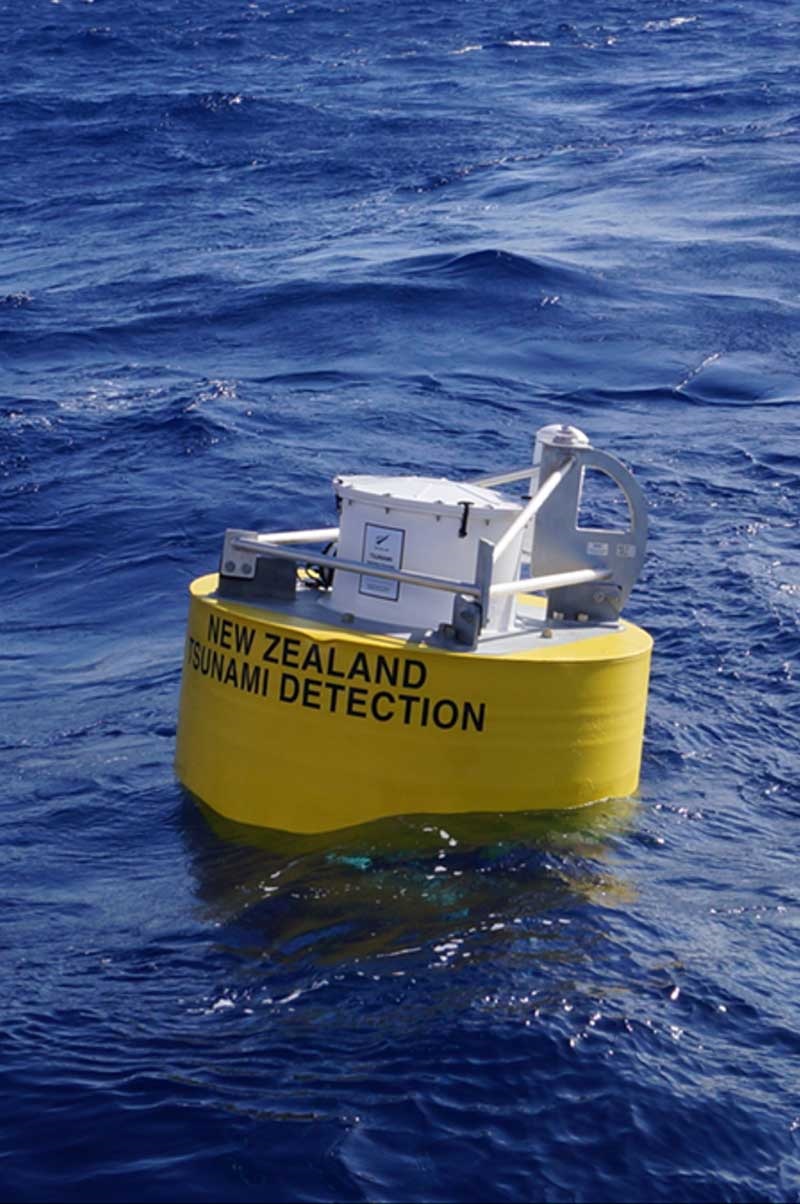DART (Deep-ocean Assessment and Reporting of Tsunami)
About NZ DART Network
New Zealand’s tectonic setting in the Pacific puts us at risk from many different tsunami sources, some may be generated and arrive at our nearest coasts in less than an hour.
To improve tsunami monitoring for NZ and our neighbours, a network of 12 DART (Deep-ocean Assessment and Reporting of Tsunami) systems has been deployed in strategic areas in the Southwest Pacific. The data helps scientists provide advice on whether a tsunami has been generated or not, and more accurately estimate how big the waves could be if they reach our coast and when they might reach us. The DART network also provides rapid confirmation when no tsunami has been generated after a large earthquake or other possible trigger events such as submarine landslides and volcanic eruptions.
NZ DART Network - Tsunami detection technology
GeoNet's Ask An Expert - The Tsunami Edition - Compilation
DART systems are deep-ocean instruments that monitor changes in pressure at the sea floor. Each system consists of a bottom pressure recorder (BPR) that records pressure and a surface buoy that converts the pressure change to an equivalent change in sea level. The buoy transmits this data via satellite back to GNS Science’s 24/7 National Geohazards Monitoring Centre (NGMC) and the Rapid Characterisation of Earthquakes and Tsunamis (RCET) automated analysis system for signal post-processing and advanced modelling.
When a DART system is triggered by an event, the NGMC activates the wider GNS science response teams including the Tsunami Experts Panel (TEP), which analyses the DART data to generate information for the National Emergency Management Agency (NEMA) such as when and how big the waves might be if they arrive at the shoreline and for how long they remain a threat to coastal communities. NEMA then uses this information to issue improved advisories and warnings to the public.
Data from the network is also transmitted to the Pacific Tsunami Warning Center in Hawaii and the IOC sea level monitoring website to enhance trans-Pacific forecasts, providing benefits to all countries surrounding the Pacific Ocean, including Tokelau, Niue, the Cook Islands, Tonga, Samoa, New Caledonia, Vanuatu, Fiji and Australia.
For more information on DART and stories about the how the DART data has contributed to tsunami response visit the GNS website. For more information on DART and tsunami warning visit the NEMA website.
Partnerships
The deployment of the DART network follows many years of work by GNS Science, NIWA and NEMA, and support from SAIC. Our scientists and partners designed the network and planned the locations of the DART sites to maximise the benefit to Aotearoa New Zealand and other countries in the Southwest Pacific, especially from the threat of "stealth tsunamis" (Power et al., 2018; Fry et al., 2020). The DART network is funded by MBIE and MFAT.
MFAT supports tsunami warning for Pacific countries through the international development programme. The Australian Department of Foreign Affairs and Trade also supported the establishment of the Pacific DART network.
Know what to do?
Only messages issued by the National Emergency Management Agency represent an official warning status for New Zealand. Go to the NEMA website for their latest updates. For a local-source tsunami which can arrive in minutes, there is not enough time for an official warning, so it is important to recognise the natural warning signs and act quickly. Remember, LONG or STRONG, GET GONE. If there is earthquake shaking, drop, cover and hold. Protect yourself from the earthquake first, then act as soon as the shaking stops. If you are near the coast and experience any of the following:
- Feel a strong earthquake that makes it hard to stand up, or a weak rolling earthquake that lasts a minute or more.
- See a sudden rise or fall in water level.
- Hear loud and unusual noises from the water.
Move immediately to the nearest high ground or as far inland as you can, out of tsunami evacuation zones. Do not wait for official warnings. Once you have evacuated, follow official advice from your local Civil Defence Emergency Management Group about when it is safe to return to tsunami evacuation zones. Do not return until an official all-clear message is given by Civil Defence Emergency Management. NEMA have a great website with information on what to do before, during and after a tsunami.


